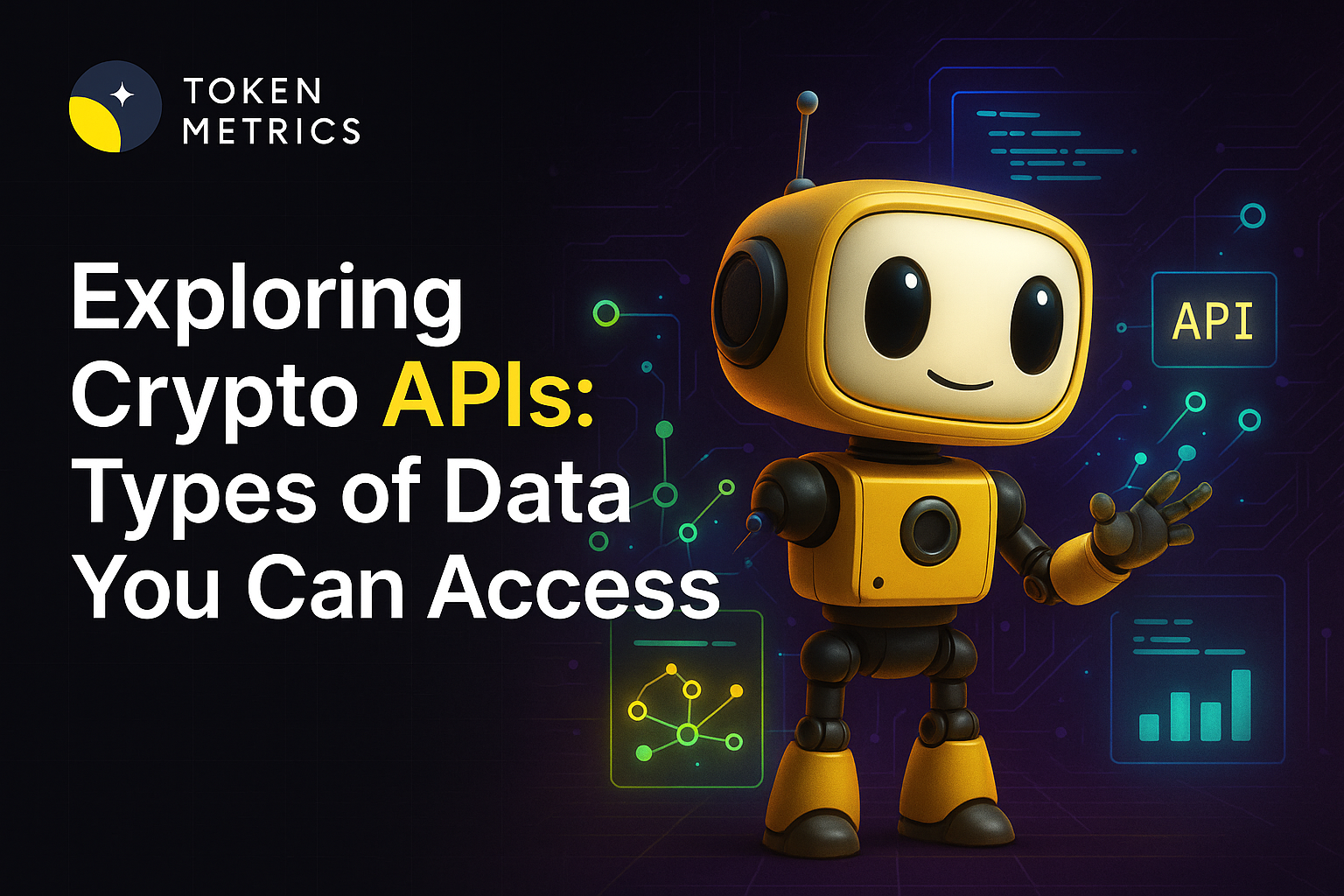Exploring Crypto APIs: Types of Data You Can Access

The explosion of digital assets has fueled a new era of on-demand data analysis, making crypto APIs essential for enthusiasts, developers, and analysts alike. But what kinds of information can you actually unlock using a crypto API, and how can this data power smarter apps or research?
Real-Time Crypto Prices and Market Snapshots
One of the most popular uses for a crypto API is accessing real-time pricing data. APIs enable you to pull the latest prices for thousands of cryptocurrencies across multiple exchanges instantly. This information is foundational for market analysis, digital asset tracking, and powering portfolio dashboards.
- Spot Prices: The current buy and sell price for a cryptocurrency.
- Volume: The amount traded within a particular time period.
- Market Cap: Calculated by multiplying the price by circulating supply.
- Highs/Lows: Highest and lowest prices over different intervals (e.g., 24-hour range).
Most leading APIs, such as the Token Metrics API, offer live pricing feeds for efficient decision-making and data integration.
Deep-Dive: Historical Price and Volume Data
Reliable historical data is key to uncovering trends, backtesting strategies, and building machine learning models. Crypto APIs typically allow you to pull:
- Tick-level Data: Every trade or price change, often down to milliseconds.
- OHLCV Data: Open, High, Low, Close, Volume over set intervals (minute, hour, day, etc.).
- Aggregated Statistics: Average prices, moving averages, and other calculated metrics.
Historical endpoints help quant researchers and developers build accurate visualizations and statistical models. For instance, analyzing 365 days of closing prices can reveal volatility patterns or market cycles.
Order Book Depth and Market Liquidity Insights
Order book data provides the pulse of live trading activity, revealing granular details about market depth and liquidity. With a crypto API, you can access:
- Bid/Ask Orders: See active buy (bid) and sell (ask) orders, including sizes and prices.
- Order Book Snapshots: Full snapshots of orders at a moment in time or real-time streaming updates.
- Depth Charts: Visualize how deep the market is at different price levels.
Order book access is crucial for algorithmic trading, slippage estimates, and evaluating liquidity. Some APIs even support aggregated order books across several exchanges for more complete market intelligence.
Live Trades, Transactions, and Ticker Data
In addition to static prices, many crypto APIs deliver real-time trade and ticker data. This includes:
- Ticker Streams: Continuous feeds of price and volume changes for multiple assets.
- Trades Feed: A chronological record of every executed trade—useful for volume analysis and pattern recognition.
- Trade Metadata: Additional details like trade size, buyer/seller side, and unique trade IDs.
Use cases range from powering trading bots to feeding AI-driven analytics or anomaly detection systems. This granularity allows a deeper understanding of real-time market sentiment.
Access to On-Chain and Blockchain Analytics
Beyond market data, advanced crypto APIs now offer direct access to blockchain or on-chain data. Developers and analysts gain the ability to:
- Monitor Wallet Balances & Activity: Track transactions, wallet holdings, and token movements.
- Analyze Smart Contracts: Fetch function calls, execution outcomes, and contract metrics.
- Identify Network Metrics: Including block times, hash rates, gas fees, and validator stats.
Such on-chain analytics underpin advanced research, compliance processes, and fraud detection strategies. APIs that aggregate insights across multiple blockchains add significant value for multi-asset and multi-chain projects.
Build Smarter Crypto Apps & AI Agents with Token Metrics
Token Metrics provides real-time prices, trading signals, and on-chain insights all from one powerful API. Grab a Free API Key
Frequently Asked Questions
What is the most common data provided by crypto APIs?
Most crypto APIs supply real-time prices, trading volume, order books, and historical price/volume data. Some also cover blockchain transactions and wallet-level insights—useful for a range of research and app development scenarios.
Can I get data from multiple exchanges with one API?
Leading crypto APIs aggregate data from various exchanges, allowing developers and analysts to access consolidated prices, order books, and liquidity. Aggregated APIs minimize discrepancies and broaden coverage.
How far back does historical crypto data go in APIs?
The available historical depth varies; top APIs like Token Metrics offer years of daily price data, with some offering tick-level data spanning months or years. Always review documentation for specific asset or interval support.
Why is programmatic access to crypto data important?
APIs allow for automated retrieval, filtering, and analysis of large datasets—enhancing research, powering trading robots, building dashboards, or supporting AI-driven models with up-to-date, reliable information.
What are practical uses for on-chain data from APIs?
On-chain data enables compliance monitoring, wallet tracking, DeFi analytics, NFT research, contract auditing, and forensic investigations. Modern APIs help analysts and businesses stay agile amid evolving blockchain trends.
Disclaimer
This article is for informational purposes only and does not constitute investment, financial, legal, or tax advice. Cryptocurrency markets are volatile and involve risks. Always conduct your own research before making decisions or building applications based on crypto data.
Create Your Free Token Metrics Account

.png)




%201.svg)
%201.svg)


%201.svg)










.svg)




.png)